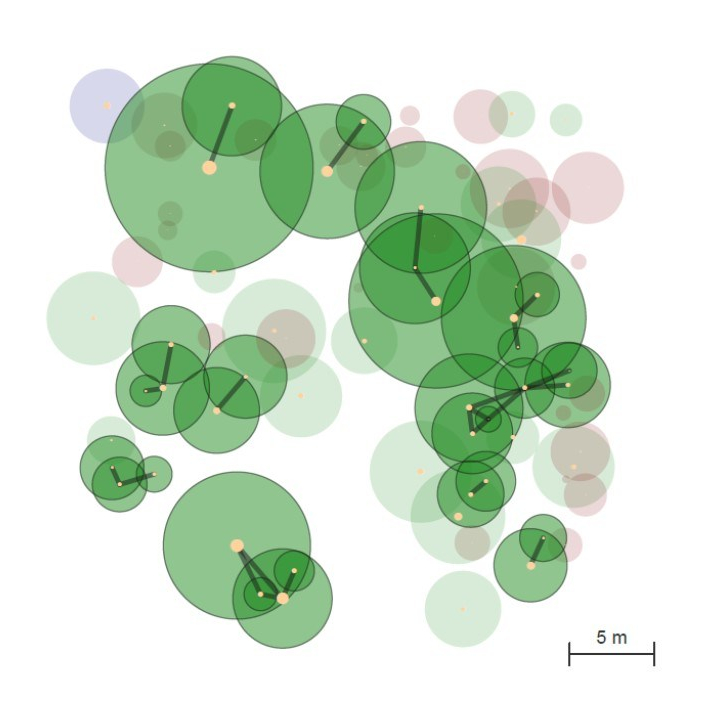Aims to understand the ecological significance of root network formation via natural root grafts within mangrove forests.
Two of the oldest living trees known on earth, the Pando, a trembling aspen, and the Old Tjikko, a Norway spruce, are clonal plants. Their longevity has been attributed to the mutual benefit of resource sharing and the accumulation of beneficial somatic mutations. The transfer of water resources, photosynthates and nutrients between donor trees and receiver trees is also known for mycorrhizal networks and trees connected by grafted roots. Could it be that networking is generally advantageous increasing forest integrity under harsh conditions?
GRIN could revolutionize our understanding of forest dynamics, which so far is believed to be driven by the inference of competition and facilitation among single trees, and not among single trees and tree networks.

Root network in a mangrove forest plot (Image by Martin Zwanzig) 
Root graft for two black mangrove trees (Image by Alejandra Vovides)
This is a Volkswagen funded project under the “Off-the-beaten-track” initiative. An extraordinary project that will combine ecophysiology, functional anatomy and modelling to describe the processes of resource sharing through grafted roots.
Natural root grafts
Root grafting occurs when two roots from the same or different plants come into contact and join their tissues. A functional root graft involves the morphological union of cambium, phloem and xylem, which could serve as a path for resource sharing, thus potentially inducing positive interactions.
While natural root grafts have been reported in around 150 plant species, a network perspective is yet to be explored, and its implications at the forest stand level remains understudied.
We will also address variations in the direction of interactions as a response to environmental stress.
Project goals
The aim of this project is to generate a clear understanding of the ecological significance of root grafts within the mangrove forest. For this, the project will combine studies on functional anatomy, ecophysiology and individual-based modelling, integrating a network perspective.
Mangrove root grafts
Mangrove forests are well recognized for their productivity and value in ecosystem services provision, which are central to coastal protection, sediment stabilization and human wellbeing. In the last decades, the efforts to understand and protect this coastal forests has increased dramatically, but yet the biomass under the ground remains a challenge and little research has addressed mangrove root systems as a drivers of population dynamics.
We seek to explore mangrove root grafts for three main reasons: (1) Due to the low levels of oxygen in mangrove sediments, roots are rather shallow and well developed woody roots are relatively easy to explore. (2) Salinity stress gradients and their consequent effects in water availability for roots are well marked in the mangroves. (3) Preliminary studies have revealed a high frequency of root grafts for the black mangrove (Avicennia germinans)

Hi, may i know what specific species did you work with? And have yoi tried triple rootstock grafts in mangrooves?
LikeLike
Hi. Thanks for your interest. We are working with Avicennia germinans for now, and look forward to looking up full networks, pairs, triple or multiple trees.
LikeLike
Hello. Did you succeed?
LikeLike
Hi, we’ve found changes in network topologies along a stress gradient, which suggest there are mechanisms controlling optimal network sizes for successful cooperation (paper currently under review). We still have a long way to go and we look forward to being able to get back to the field.
Stay safe
LikeLike
interested in your research and where it goes was trying to find you on linked in but ill ask here if you knew much or had any information on mangroves being used as rootstock to grow other things in areas where farming is or will be difficult in the future due to salinity.
LikeLike
Hi Josh, I have no information on mangroves being used as rootstock. Certainly an interesting topic, the challenge would probably be genetic compatibility.
LikeLike